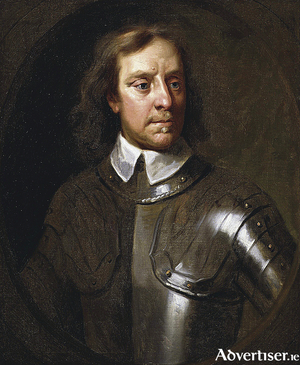Search Results for 'Oliver Cromwell'
8 results found.
David McWilliams talks about the impact of the pandemic and the environment on travel
David McWilliams has worked all over the world, and speaking on the Travel Tales with Fergal podcast, the top economist says that people need to be aware “of the impact of air travel on the environment” — and reckons he was a bad example with all his jet-setting before the pandemic.
Wolfwalkers - an Irish cinema triumph

ONE OF my most hotly anticipated releases this year is from Kilkenny based animation studio, Cartoon Saloon, which burst on the scene a decade ago with the Oscar nominated Secret Of Kells.
Broken angels tell a tale
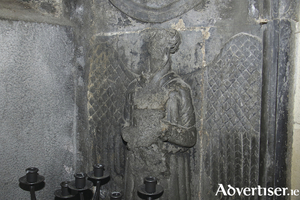
Living in Ireland during the mid 17th century was a frightening and a bloody time. Following the extreme political crisis that resulted in civil war in England, Ireland was plunged into a period of despair that would lead to the surrender of Galway, and the beginning of its gradual demise. The invasion by Oliver Cromwell’s New Model Army, a ruthless exterminating machine, in 1649, led by Cromwell himself, not only destroyed all military opposition, besieged and ransacked towns, and imposed harsh penal laws on Catholic survivors, but it changed the demographic of the cities and lands with the resettlement of faithful Cromwellian generals, and their families. And in a new twist: tens of thousands of Irish people were transported to plantations in the West Indies, and elsewhere.
The King's Head Pub - a thirty year association with the arts in Galway
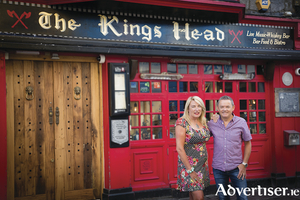
The King's Head pub in the heart of Galway’s Latin Quarter is steeped in more than 800 years of history. This landmark pub, which has been owned and run by the Grealish family since 1989, has created its own history with the arts in Galway - earning a wonderful reputation for live music, lunchtime comedy, and the outrageous.
The Protestant enclave of Inishbiggle

In the 1650s, Catholics were uprooted from their productive, arable, lands in several Irish counties by Oliver Cromwell’s Protestant army and forced at musket point to desolate, barren, Connacht. Their confiscated lands, the better holdings in Ireland, were distributed to Protestant settlers, Cromwell’s army as pay, and carved up to pay debts. Maps of Ireland, pre and post Cromwell, detailing the regression of the predominantly Catholic associated Irish language and customs point to a culture that was deliberately and officially forced to areas thought of as being so inhospitable they would not survive. County Mayo was included among these religious and cultural ghettoes. The living standards of the banished Catholics fell dangerously low and remained so for centuries. Christian duty led some within the Protestant clergy to later establish evangelical missions in the wild Irish west to give relief to the descendants of those very same Catholics. Salvation and, dishonourably, food were offered through conversion to Protestantism. Whereas 17th century Protestants believed it was God's will that godless Catholics be sent to suffer and perhaps perish in Mayo, 19th century Protestants believed it was His will that these (still godless) Catholics be reclaimed so that they might be saved. The Rev Edward Nangle's Achill Island Mission set out to do just that in 1831.
Mayo Day celebrates our past, present and future
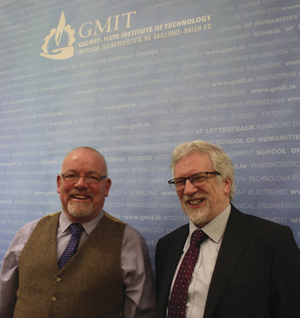
The multi-purpose Galway-Mayo Institute of Technology’s Castlebar campus staged the energetic opening ceremony of Mayo Day 2017 last Friday evening. The bank holiday weekend events were long billed to be a celebration of Mayo - past, present and future - and with no little amount of imagination and obvious hard graft, the organisers over-performed in achieving their aim. In his Mayo Day promotional video, director Lorcan Hynes beautifully wove an emotional message around the cliffs of Mayo and the skyscrapers of the world. The message invited the Mayo diaspora to return to a future Mayo, where prosperity will once again create opportunity. Our diaspora was to the fore during Mayo Day and for good reason as Peter Hynes, Mayo County Council’s chief executive, informed the opening ceremony that the global dispersion with Mayo heritage stands at 3.5 million people. Their affinity with their home county has led to Mayo associations growing up in the world’s biggest cities. Just as Mayo currently fits into current global themes of emigration and identity, so it did in the past when the international themes were revolution and republicanism. Those earlier themes, and in particular the political relationship they spawned between Ireland and France, were discussed at the fascinating Mayo Day La L’Arbre de la Liberté - Liberty Tree Conference on Friday and Saturday. The two-day conference offered an impressive line-up of historians and authors.
Mayo’s seventeenth century rebel song
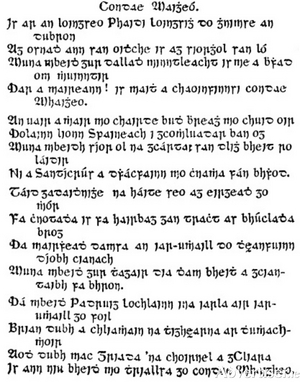
I recently stumbled upon a 17th century song, as you do, which was dedicated to the county of Mayo. The song, titled "The County of Mayo", initially caught my eye as it was printed in the old Irish type, a rare sight nowadays. The author was a man named Thomas Lavelle who was active during the middle of the 1600s.
